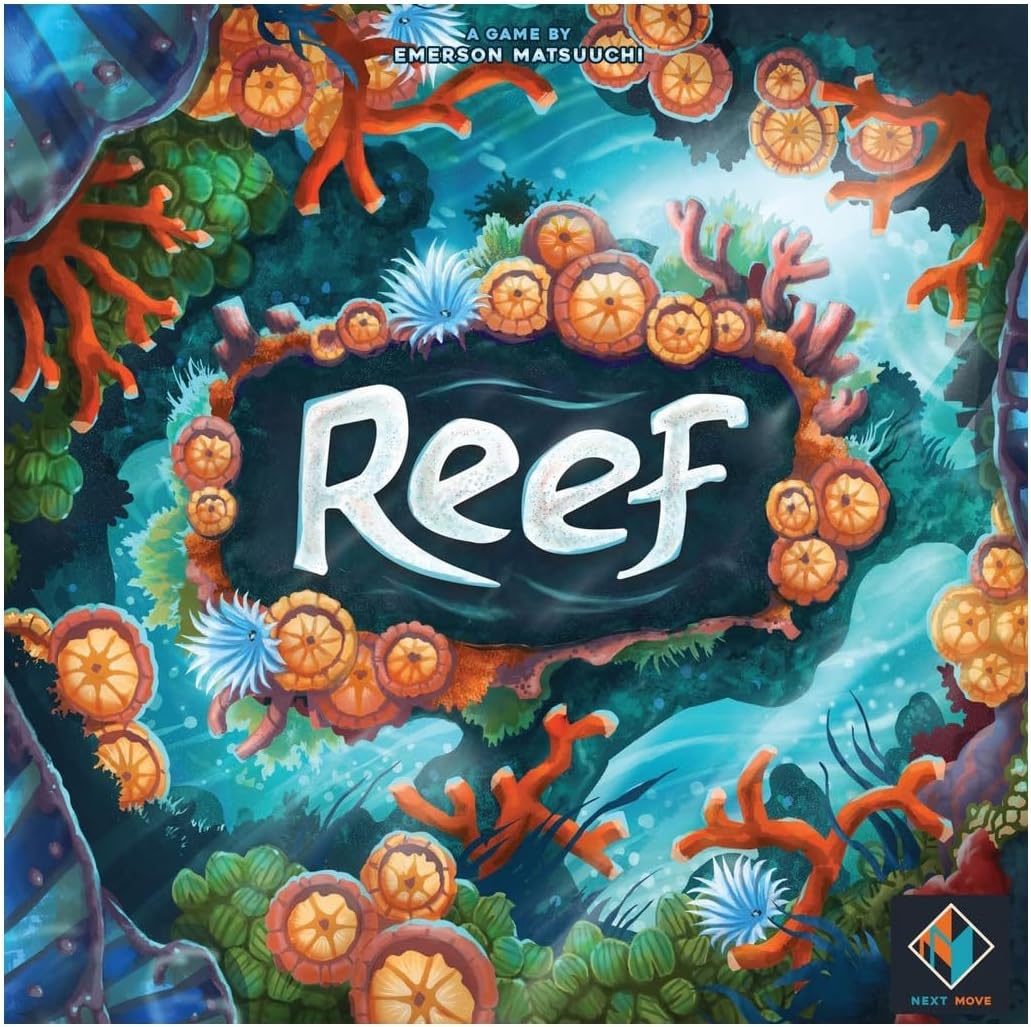About this deal
The first thing players notice about Reef is the fantastic coral pieces. The chunky and colorful pieces are the centerpiece of the game. Not only do they present a great tactile experience with the game, but they’re also very functional. While each color is uniquely shaped, they all nest on top of each other very well. We love seeing our colorful coral reefs grow. Players have a central choice each turn – take a card from the card display and add it to their hand, or play a card from their hand. The latter of these allows players to take the coloured reef pieces from the supply displayed on the card and add them to their personal board, and then also score the pattern printed on the bottom of the card. Reefis the next game coming from the publishers of the extremely popular Azul. The two games share the same publisher, and the same four letter name that is rumoured to be the theme for a line of family weight abstract games from Next Move Games, an imprint of Plan B Games. Abstract strategy games seem to be on the rise in our hobby. Where they were once ignored due to their themeless nature and usually bland components, games like Azul, Santorini, and Onitama have reinvigorated the genre.
While you’d love to score every pattern in your hand, you simply won’t be able to do so. Some cards you’ll have to play for their collection potential and others for their pattern scoring.If patterns show wild pieces (a 4-colored shape) with printed numbers, only the height of those top pieces is relevant, not their color.
Of course, added to this is the fact that everyone else is trying to do the same thing, and may want the same card or cards that you do. Or perhaps they are just aiming for a massive payoff and you are need to stop them! Diversify your reef. Focusing too much on one type of coral might limit your scoring options later on. The patterns you need to create for scoring are fluid and ever-changing, leading to endless configurations on your board. The strategies that worked for you in one game may not be as effective in the next. Reef demands adaptability, constantly challenging you to find the most efficient way to score points given the current state of your reef and the available cards.Printed numbers within the shown pattern refer to the height of that coral piece. For example, a number 3 in a purple coral symbol means the purple piece on the player board must be at the 3rd level high. Personally, I thinkReefmight have the edge for me. It’s slightly less cut-throat thanAzul, especially at the two-player count we frequently play at. It also scratches a bit of an engine-building itch, although it’s not strictly in that style of game.Reeflooks great and plays really smoothly, and is really rewarding when you execute a brilliant sequence of turns.It’s certainly a game that I highly recommend. The game ends when one of the four reef colors runs out. In this case, the players total up their victory points and the player with the most is the winner. You will be building up your reef over the course of the game. Game Experience: Once the game ends, you get one last chance to score any cards that you still have in your hand. This works like scoring during the game except that you can only count each pattern once no matter how many times it may show up in your reef. Collect the most points by cleverly acquiring and playing cards that let you grow your reef and score its patterns.
Reef is a really simple to learn game that is both easy to teach and play. There are only two actions you have to learn, draw a card or play a card. I am a big fan of the Azul games (my favourite of which you can read about in my Azul Summer Pavilion review) which are also from Plan B games. Compared to that series, Reef feels significantly lighter.Every time you play a card you always start by taking and placing the coral shown on the top part of the card. This isn’t optional. You always have to take and place both pieces of coral and this has to be done before you score the card. When learning Reef it is very easy to forget the timing on this and play a card only to realize that what you planned to score is going to be ruined by the coral you are about to place. More commonly, even once you know the game well, is messing up any long term plans you have due to forgetting that you will be adding to your reef with every card before scoring.
 Great Deal
Great Deal 